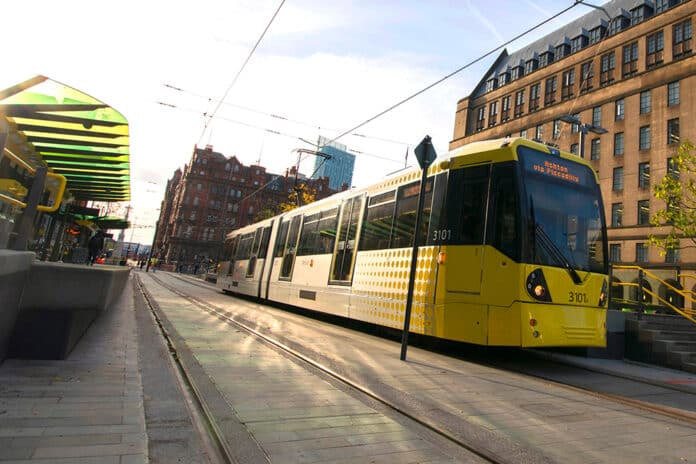An in-built ventilation system on Metrolink’s trams constantly circulates fresh air, helping to limit the risk of aerosol transmission of viruses, such as COVID-19, a leading independent study has found.
Transport for Greater Manchester (TfGM) commissioned global built environment and consultancy firm Arup to undertake Computational Fluid Dynamics (CFD) modelling of its M5000 trams – the first study of its kind in the United Kingdom.
The findings come as England moves into Step 2 of government’s four step roadmap for easing the restrictions, enabling the re-opening of non-essential shops, gyms, hairdressers and outdoor attractions, along with some restricted outdoor hospitality.
The modelling assessed the air flow within the vehicle, with particular focus on how this relates to the potential for aerosol transmission of viruses, by looking at how exhaled breath spreads through the vehicle, and how that is affected by factors like opening windows, mask wearing and activity levels.
Metrolink’s trams are ventilated through fans on the roof and air diffusers in the ceiling, with air exhausted from under-seat vent holes.
Even with the ventilation system operating at half capacity, the study found that there were approximately 20 air changes per hour, which is better than the recommendation in a recent paper from the Scientific Advisory Group for Emergencies (SAGE)*.
Arup’s modelling also showed that the risk of transmission is greatly reduced when face coverings are worn, while heavy-breathing – such as after a short run and/or loud talking and shouting – increase the risk of aerosol transmission.
It found that the risk of infection was reduced by around two-thirds by passengers wearing face coverings.
The modelling has been shared with the Department for Transport and light rail industry body, UK Tram.
Since the outbreak of the virus TfGM has introduced several measures to ensure those needing to travel on Metrolink can do so safely, including:
- An enhanced cleaning programme using anti-viral products, which sees touch points on trams and stops cleaned every two hours.
- Adapting service patterns in line with demand and using all available trams to help with social distancing.
- Introduction of dedicated ‘trambassadors’ to promote safe travel.
- Installed hand sanitiser dispensers at the busiest stops.
- Installed signage on stops and trams to encourage social distancing.
- Worked as part of the TravelSafe Partnership to hold more than 50 proactive ‘days of action’ to promote safe travel and challenge those flouting the rules.
TfGM’s Head of Metrolink, Danny Vaughan, said: “The safety of all those using Metrolink has, and will continue to be, our number one priority and the more we understand about how the virus is transmitted, the more effective our efforts in combating it can be.
“Studies like this and the recent study by Imperial College London on the effectiveness of cleaning regimes – like we have on Metrolink – demonstrate how we and our partners across the transport industry are taking an evidence-based approach to ensuring safer travel.
“With Step 2 of government’s road map now in place I hope these studies, coupled with robust cleaning and other additional measures we’ve introduced, help make people feel safe and confident as they return to our network.”
The Arup project lead, Paul Lynch, said: “Both as an engineer and a user of the Metrolink network, it has been reassuring to discover how well ventilated Metrolink vehicles can be, and also how engaged TfGM are in understanding the different modes of transmission and how to reduce the risks for passengers.”
*A recent SAGE Environmental Modelling Group paper recommends that ventilation rates should be at least 10-15 l/s/person in “spaces where there is likely to be an enhanced aerosol generation rate (e.g. through singing, loud speech, aerobic activity)”, in addition to face coverings and social distancing measures. The modelling for Metrolink was 16 l/s/person.
Photo credit: Transport for Greater Manchester



































 0113 2082620
0113 2082620 info@railbusinessdaily.com
info@railbusinessdaily.com 15 Mariner Court, Wakefield WF4 3FL
15 Mariner Court, Wakefield WF4 3FL

